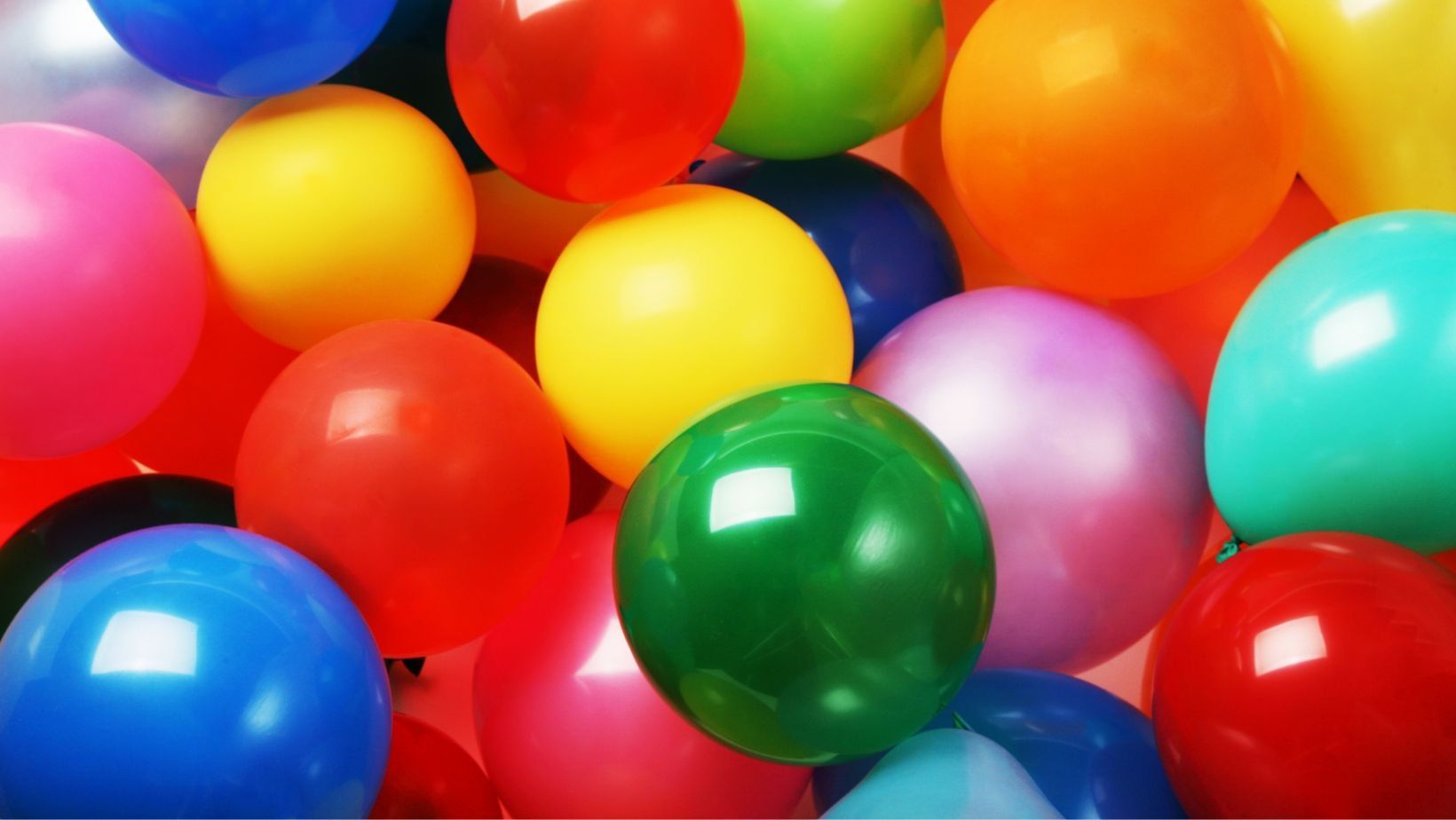
Trigger Warning: Includes descriptions of harm to animals
Many kids (heck, even some adults) feel like the perfect party is incomplete without some on-theme balloons to jazz up the space. But, balloons can come with a whole host of environmental impacts. Enter: biodegradable balloons. Do they actually exist and are they worth the hype? How can we throw the perfect bash while keeping the planet in mind?
Are regular balloons 'bad'?
Bad is subjective! Harmful to certain environmental systems, on the other hand, is not. Conventional balloons - made from mylar or synthetic latex - have some pretty serious impacts on the environment.
Let's start with the shiny silver balloons used to make those giant numbers and letters (popular at Bat Mitzvahs and Sweet 16s). These foil balloons are made from mylar, or BoPET, a metal-coated plastic like polyethylene or nylon. Mylar is also a commonly used material in glitter (surprise, surprise). PETs, which includes BoPET, are known to accumulate in the environment. In fact, the mismanagement of the disposal of PET-based products, like food and beverage products, is one of the leading causes of plastic pollution (both micro and macro) in marine ecosystems.
The other, more traditional balloons are made from synthetic latex. Synthetic latex is made from petrochemicals, a product of the fossil fuel industry. This kind of rubber makes up 60-70% of the total rubber used globally. Synthetic latex requires significant amounts of petroleum and energy consumption, and it creates waste during manufacturing.
Unfortunately, the most responsible way to dispose of these conventional balloons is to make sure they end up in the trash and head to landfill. If not disposed of properly through landfill, balloons can enter the natural environment after use. When in the natural environment, balloons are one of the most significant entanglement threats to marine life, including sea turtles and sea birds. Balloons, if swallowed, can cause starvation, dehydration, or choking. We apologize for the party-pooping.
And how about those balloons that sometimes just escape into the sky? While not ideal, we're less keen on those intentional balloon releases that pollute our environment and speak to our 'throwaway society.' This is the idea that when we throw something away, we think it just ~disappears~. In reality, just because it is out of sight, does not mean it is gone forever.
First, what does biodegradable mean?
Biodegradable is a very, very broad term - biodegradable just means that items break down into organic matter, typically in a three-to-six-month window. And, biodegradable is not always synonymous with compostable. We think it's easiest to think of biodegradable and compostable as rectangles and squares, respectively; all compostable items are biodegradable, but not all biodegradable items are compostable. Want to learn more? Check out our blog on all things biodegradability.
Because this is such a nebulous concept, sometimes when materials are labeled as biodegradable, they're, unfortunately, not actually biodegradable. 'Biodegradable' is not a federally regulated term, so brands can slap the B-word on their label with it meaning a whole lot of nothing. To make things even more complicated, this isn't always the case. In fact, in California, there are laws requiring claims to be substantiated by reliable scientific evidence to prevent swindling consumers, and some brands use 'biodegradable' as an accurate qualifier to how their products can, and should, be disposed of. Moral of the story? Before trusting that your product or packaging is biodegradable or compostable, check to see if the claim is substantiated or regulated, and if so, by what agency.
So, what are biodegradable balloons made of?
Balloons claiming to be biodegradable are often made of natural rubber latex. Natural latex is made from the sap of rubber trees, which is whipped into a froth, poured into molds, and baked into layers. Rubber trees can produce sap for more than 20 years and don't need to be cut down during sap collection. This is great news for the health of the trees and the soil since the longer a tree remains in the ground, the more nutrients the tree can absorb and the soil can retain. We are huge proponents of natural latex for its supportive, durable, and naturally antimicrobial properties.
Here's the big caveat: while natural latex itself is biodegradable, the natural latex used to make biodegradable balloons is often mixed with plasticizers to soften the material (cough, cough, phthalates) and treated with a bunch of chemicals that protect against bacterial decomposition, including ammonia, tetramethyl thiuram disulfide, and zinc oxide. So... that natural latex isn't looking so 'biodegradable' anymore.
In fact, a 2020 study on 'biodegradable' balloons (those made from natural latex), found that the balloons do not meaningfully degrade uniformly in natural environments - neither in freshwater nor in marine ecosystems nor in industrial composting facilities. The study concluded that when latex balloons enter the natural environment, they will continue to contribute to pollution and pose potential harm to wildlife. Sigh.
Should I buy biodegradable balloons instead of conventional ones?
When it comes down to biodegradable balloons vs. conventional balloons, it might be worthwhile to opt for neither, if you can help it. The whole 'biodegradable' balloon fad is a greenwashing branding exercise - biodegradable balloons, when released into the environment, have similar ecosystem impacts as their conventional counterparts. If you do need (want?) balloons as decor, make sure they don't float off and dispose of them properly in the trash. All in all, we are yet to find a truly biodegradable balloon - this is a flag to any brands that are brainstorming a solution: we're all ears!
